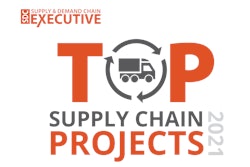
In theory, supply chain risk management should be self-regulating, to a certain extent at least. If companies fail to identify, account for and mitigate risks in their supply chain, they suffer the financial consequences. So, it's in their interest to approach it with the care and diligence it deserves.
But, when existing risk management and mitigation protocols result in things like last year's nationwide personal protective equipment (PPE) shortage, or the logistical issues that arose following stuttering global production and failing supply chains, governments tend to want to get involved.
Of course, such events are relatively rare, and government intervention in how supply chains are constructed and managed doesn't need to happen very often. But, given the scale of disruption brought to U.S. supply chains by the Coronavirus disease (COVID-19) pandemic over the past 18 months, it’s not surprising that this is one of the Biden Administration’s focus areas.
When President Joe Biden signed an executive order enforcing a 100-day review on critical U.S. supply chains, he mandated something that most conscientious supply chain professionals have already been considering -- a complete post-pandemic review of risk across their supply chains.
Indeed, for many organizations, that kind of assessment and adjustment was already on the agenda. A recent study found that 50% of mid-market companies are actively seeking alternative and backup suppliers to help them avoid the kind of disruption they experienced last year.
The aim of the Executive Order, of course, isn't just to secure the futures of individual organizations. It's to secure the supply of essential goods and materials to the United States and better support the industries that depend on them.
It's more than just a re-evaluation of supply chain risk. It's a complete re-examination of supply chains overall, questioning whether pre-pandemic supplier, logistics and production decisions are still the best and most reliable choices in the post-pandemic world.
The order doesn't mean change now, but it does mean change is coming
The Executive Order is a foundational step toward changes like nearshoring and reshoring production of critical goods and materials that have been discussed for decades to ensure consistent supply for U.S. companies and citizens.
One thing President Biden's Executive Order will certainly do is provide greater visibility and insight into critical supply chains. And, that will give everyone a better understanding of their risk exposure.
That visibility alone won't solve any of the major supply chain challenges that U.S. companies have experienced in recent months and years. It also won't directly bring offshored production of goods and components back to the United States. But, what it will do is provide organizations and the government with the intelligence they need to make sure the next actions they take are the right ones.
Why the review must look back to look forward
One of the most common and dangerous mistakes made when managing supply chain risk is making decisions based purely on the threats and conditions facing today.
When you notice a situation developing like the semiconductor shortage that’s currently impacting U.S. manufacturers, it’s very easy to conclude that change is needed and that the supply chains we currently depend on aren’t fit for purpose.
That may be true. But, that conclusion ignores one very important fact -- the supply chains in question were designed the way they are for a reason. As part of this review, the government must work backwards to fully understand the economic, geopolitical, social and environmental factors that have shaped today’s complex international supply chains.
If the government wants to redesign supply chains to improve resilience, mitigate risk and bring control of supply closer to U.S. soil, it must address the underlying drivers of globalization and offshoring that made today’s supply chains the way they are.
A step closer to calculated nearshoring and reshoring
At times like this, ongoing conversations about nearshoring and reshoring offshored production naturally come to the fore. After all, if the government simply brought offshored production of essential products like PPE back to the United States and imposed restrictions to ensure that people ”Buy American,” wouldn’t that remove most of the risk in question?
In practice, in most scenarios, nearshoring and reshoring are incredibly hard to execute without negative fallout, both domestically and abroad. But, the President’s Executive Order could be a powerful step toward evaluating what is possible and probable.
By mapping out critical supply chains in detail, the government can work with organizations to visualize an ideal end state. There are a lot of complex – and occasionally conflicting – objectives to consider, so laying everything out clearly through a deep and rigorous analysis is essential.
That view will help the government and organizations identify the best opportunities for nearshoring and reshoring to reduce supplier risk and encourage economic growth, without negatively impacting consumers or having to provide colossal subsidies.
It’s a positive step, but big questions and complex tensions remain
While the outcomes of the President’s 100-day supply chain review remain to be seen, the review itself can be a significant positive from a risk management point of view. Even if no further action happens as a result, it will at the very least show organizations and industries, the value – and implications – of re-evaluating and reforecasting of supplier risk.
With deep supply chain insights from the review, the government will be in a great position to work with organizations and industries to help prevent similar supply shortages in the future, while also bringing financial benefits to the U.S. economy.
The long-term impacts of the Executive Order remain to be seen, and will ultimately be shaped by the actions the government decides to take next. In theory, they’ll have everything they need to make well-informed, balanced decisions about the future of U.S. supply chains. But, as past government supply chain intervention has shown, that isn’t always how things pan out.
The Biden Administration has a lot of important and ambitious goals to achieve over the coming years, and there’s certainly a possibility that government decision-making could be complicated or clouded by competing political agendas.
If they approach supply chain intervention as an isolated issue with the sole goal of improving resilience and continuity, the results could be strong, and U.S. businesses could find themselves much better off when the next disruptive crisis arrives. But, if the supply chain simply becomes a lever for helping the government achieve or advance other political goals, the end result may not be as positive.













